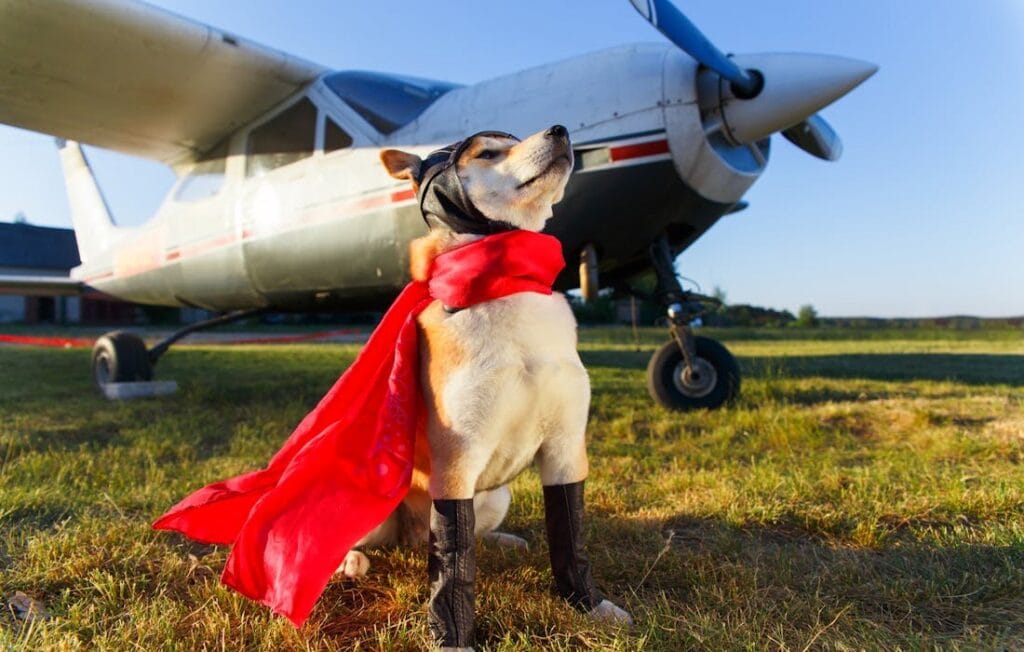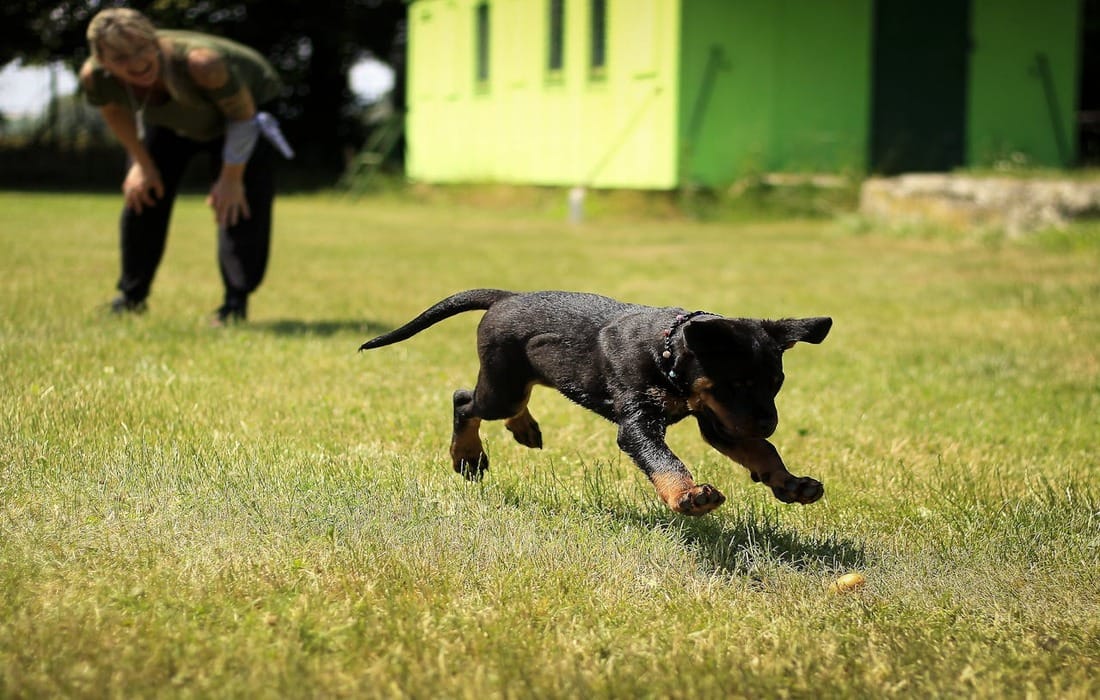Traveling with your dog can be one of the most rewarding experiences, whether you’re heading out for a vacation, moving to a new home, or simply enjoying a getaway together. But let’s face it—flying with a pet can feel like a challenge. The thought of navigating airport security, figuring out carrier requirements, and ensuring your furry friend stays comfortable in the air can be overwhelming. In this guide, we’ll walk you through everything you need to know, from planning to landing, so you and your dog can have a stress-free flight. Let’s dive in!
1. Know the Airline’s Pet Policies
Before you even think about booking a ticket, you’ll want to check out the airline’s rules for flying with a dog. Different airlines have different policies, so it’s important to get familiar with them before you travel. Here’s what you need to know:
- Pet Carrier Requirements: Most airlines require that your dog travels in an airline-approved carrier. The carrier needs to be big enough for your dog to stand, turn around, and lie down comfortably. If your dog’s small enough (usually under 15-20 pounds), they might be allowed to ride in the cabin with you, as long as the carrier fits under the seat in front of you.
- Cargo Hold for Larger Dogs: If your dog is too big for the cabin, they’ll travel in the cargo hold. Don’t worry – it’s pressurized and temperature-controlled to keep your dog safe. However, it’s always a good idea to book a direct flight when possible to minimize the time your dog spends in transit.
- Breed Restrictions: Some breeds, like Bulldogs and Pugs, have specific restrictions due to breathing issues. If you have one of these breeds, double-check with the airline to see if they have any special guidelines or restrictions.
- Pet Fees: Flying with a dog isn’t free, unfortunately. Airlines typically charge pet fees, which can range from $50 to $200 depending on the airline and whether your dog is in the cabin or the cargo hold.
- International Travel: Traveling abroad with your dog adds a few more steps. Different countries have their own rules for bringing pets in, which could include extra vaccinations or health certificates. Make sure you research these requirements before booking international flights.
2. Preparing Your Dog for the Big Flight


Proper prep is key to a smooth trip. The more ready you and your dog are, the less stressful the whole process will be. Here’s how to get started:
- Visit the Vet: Before booking your flight, take your dog to the vet for a check-up. You’ll want to make sure your dog is healthy enough for travel. If you’re flying internationally, your vet can help you meet the specific health requirements, like vaccinations or microchipping.
- Get Your Dog Comfortable with the Carrier: If your dog isn’t used to traveling in a carrier, start introducing them to it a few weeks before the trip. Make the carrier a cozy space by adding a soft blanket and a favorite toy. The more comfortable they are, the less stressed they’ll feel on the big day.
- Exercise Before the Flight: On the day of travel, give your dog a good walk or play session to burn off some energy. A tired dog is a calm dog. Just make sure not to feed your dog right before the flight, as this can cause discomfort.
- Traveling in the Cabin: If your dog is traveling in the cabin, double-check that their carrier fits under the seat and is comfortable. Bring along essentials like water, treats, and a blanket to keep them relaxed.
- Sedation – Yay or Nay? The American Veterinary Medical Association strongly advises against sedating your dog for flights. Sedatives can have unpredictable effects, especially in-flight, and can even increase the risk of health issues. Instead, focus on calming techniques, like getting your dog used to the carrier and maintaining a calm attitude yourself.
3. What to Expect at the Airport
Navigating the airport with your dog is a little different from traveling solo. Here’s what to expect:
- Arrive Early: Airports can be chaotic, so it’s always a good idea to get there early. You’ll need time to check in your dog, go through security, and get to your gate without rushing.
- Security Check: At security, you’ll need to remove your dog from the carrier and carry them through the metal detector while the carrier goes through the X-ray machine. Be sure to keep your dog on a leash and calm. If your dog is nervous, don’t hesitate to ask security for help.
- Layovers: If you have a layover, look for pet-friendly areas where you can give your dog a break from the carrier. Many airports have designated pet relief stations where your dog can stretch their legs and use the bathroom. If you have a long layover, consider taking a quick walk to keep them comfortable.
4. During the Flight: Making Your Dog Comfortable
Once you’re airborne, your dog’s comfort is still top of mind. Here’s how to make the journey as pleasant as possible:
- In-Cabin Travel: If your dog is in the cabin with you, they’ll likely stay in their carrier under your seat for most of the flight. Keep them hydrated by offering water (flight attendants usually have water on hand for pets), and toss them a few treats to make things more enjoyable. Just remember, keep the carrier closed – opening it could make your dog anxious or worse, escape.
- Cargo Hold Travel: If your dog’s in the cargo hold, try to stay calm. Airlines typically have pressurized, temperature-controlled holds for pets, so your dog will be safe. However, it’s still a good idea to include a shirt or blanket with your scent in the crate. Familiar smells can help calm them.
5. After Landing: What to Do When You Arrive
Once you touch down, there are a few things you need to do to ensure your dog’s comfort:
- Pick Up Your Dog: If your dog traveled in the cargo hold, you’ll need to pick them up at a designated baggage claim area for pets. Some airports have a separate section for animal baggage, so just be patient and follow the signs.
- Allow Your Dog to Adjust: After a long flight, your dog might feel disoriented or tired. Give them time to adjust. Take a walk, offer some water, and let them rest before moving on with your plans.
- Check for Stress Signs: Flying can be stressful, and your dog might show signs like panting, drooling, or reluctance to move. Keep an eye out for anything unusual and contact a vet if you’re worried.
6. Final Tips for a Stress-Free Flight with Your Dog
Here are a few extra tips to make your journey even easier:
- Know Your Dog’s Limits: Not all dogs handle air travel well. If your dog has a history of anxiety or health issues, it might be worth considering other travel options.
- Hydrate: Keep your dog well-hydrated. Air travel can dry them out, and staying hydrated will help keep them comfortable.
- Professional Pet Travel Services: If you’re feeling overwhelmed, there are professional services that can help manage the logistics of traveling with your dog, ensuring they’re well taken care of every step of the way.
- Familiarize Your Dog with New Places: If possible, take your dog to new environments before your flight. This can help reduce anxiety and make them more adaptable to different locations.
Final Thoughts
Flying with your dog may seem like a big task, but with the right planning, it can be a smooth and enjoyable experience. Whether your dog is flying in the cabin or the cargo hold, knowing the airline’s policies, preparing properly, and making sure your dog stays comfortable can make all the difference.
Remember: Check with your vet, research your airline, and plan ahead to ensure a safe, happy flight for you and your pet. Safe travels!













